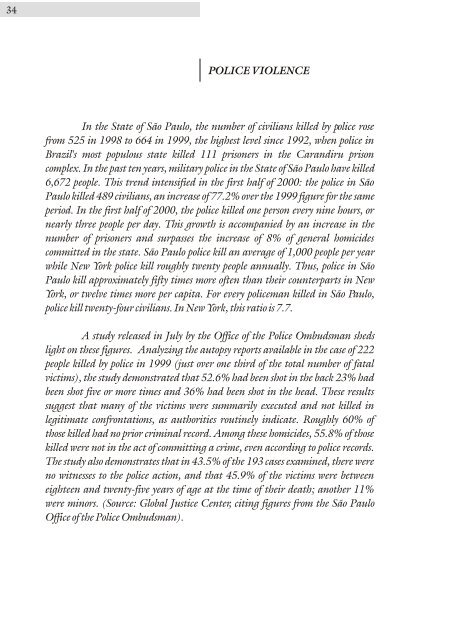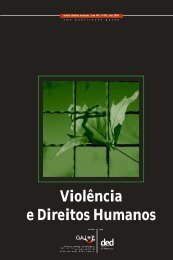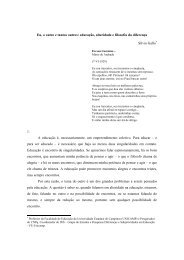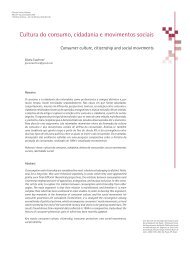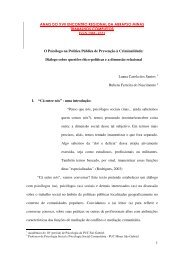EXECUTIONS
Extrajudicial, Summary or Arbitrary Executions - Gajop
Extrajudicial, Summary or Arbitrary Executions - Gajop
- No tags were found...
Create successful ePaper yourself
Turn your PDF publications into a flip-book with our unique Google optimized e-Paper software.
34POLICE VIOLENCEIn the State of São Paulo, the number of civilians killed by police rosefrom 525 in 1998 to 664 in 1999, the highest level since 1992, when police inBrazil's most populous state killed 111 prisoners in the Carandiru prisoncomplex. In the past ten years, military police in the State of São Paulo have killed6,672 people. This trend intensified in the first half of 2000: the police in SãoPaulo killed 489 civilians, an increase of 77.2% over the 1999 figure for the sameperiod. In the first half of 2000, the police killed one person every nine hours, ornearly three people per day. This growth is accompanied by an increase in thenumber of prisoners and surpasses the increase of 8% of general homicidescommitted in the state. São Paulo police kill an average of 1,000 people per yearwhile New York police kill roughly twenty people annually. Thus, police in SãoPaulo kill approximately fifty times more often than their counterparts in NewYork, or twelve times more per capita. For every policeman killed in São Paulo,police kill twenty-four civilians. In New York, this ratio is 7.7.A study released in July by the Office of the Police Ombudsman shedslight on these figures. Analyzing the autopsy reports available in the case of 222people killed by police in 1999 (just over one third of the total number of fatalvictims), the study demonstrated that 52.6% had been shot in the back 23% hadbeen shot five or more times and 36% had been shot in the head. These resultssuggest that many of the victims were summarily executed and not killed inlegitimate confrontations, as authorities routinely indicate. Roughly 60% ofthose killed had no prior criminal record. Among these homicides, 55.8% of thosekilled were not in the act of committing a crime, even according to police records.The study also demonstrates that in 43.5% of the 193 cases examined, there wereno witnesses to the police action, and that 45.9% of the victims were betweeneighteen and twenty-five years of age at the time of their death; another 11%were minors. (Source: Global Justice Center, citing figures from the São PauloOffice of the Police Ombudsman).


